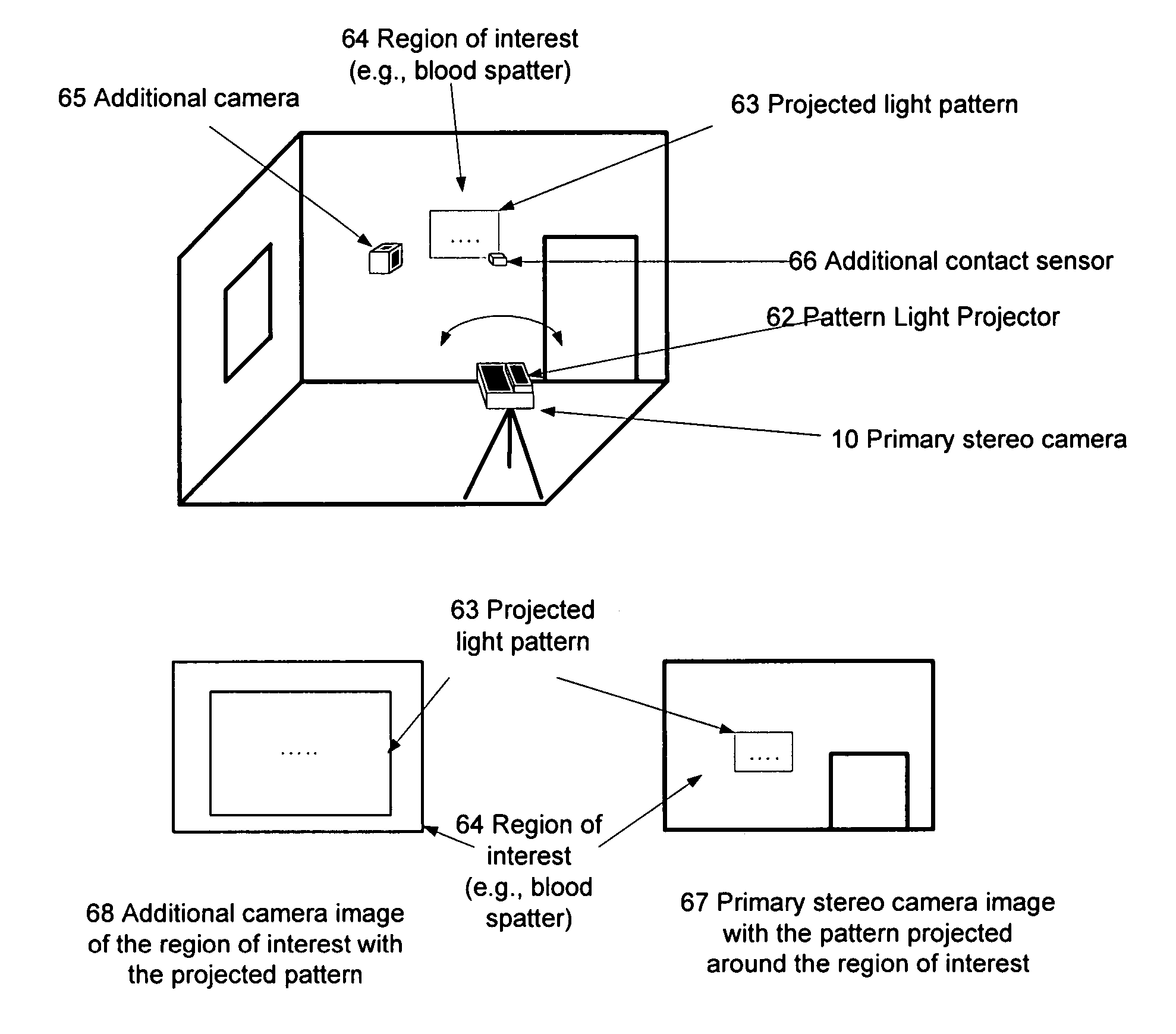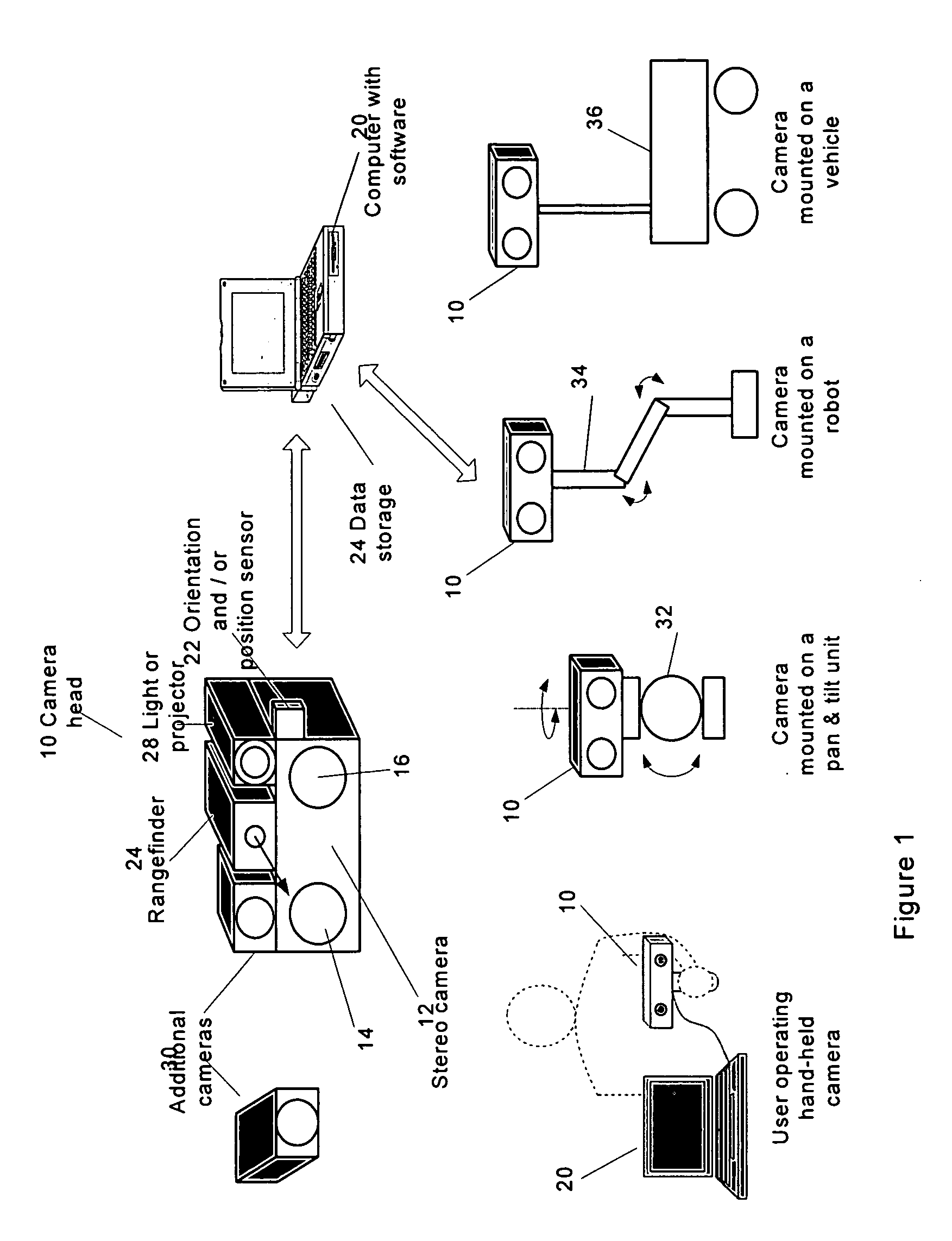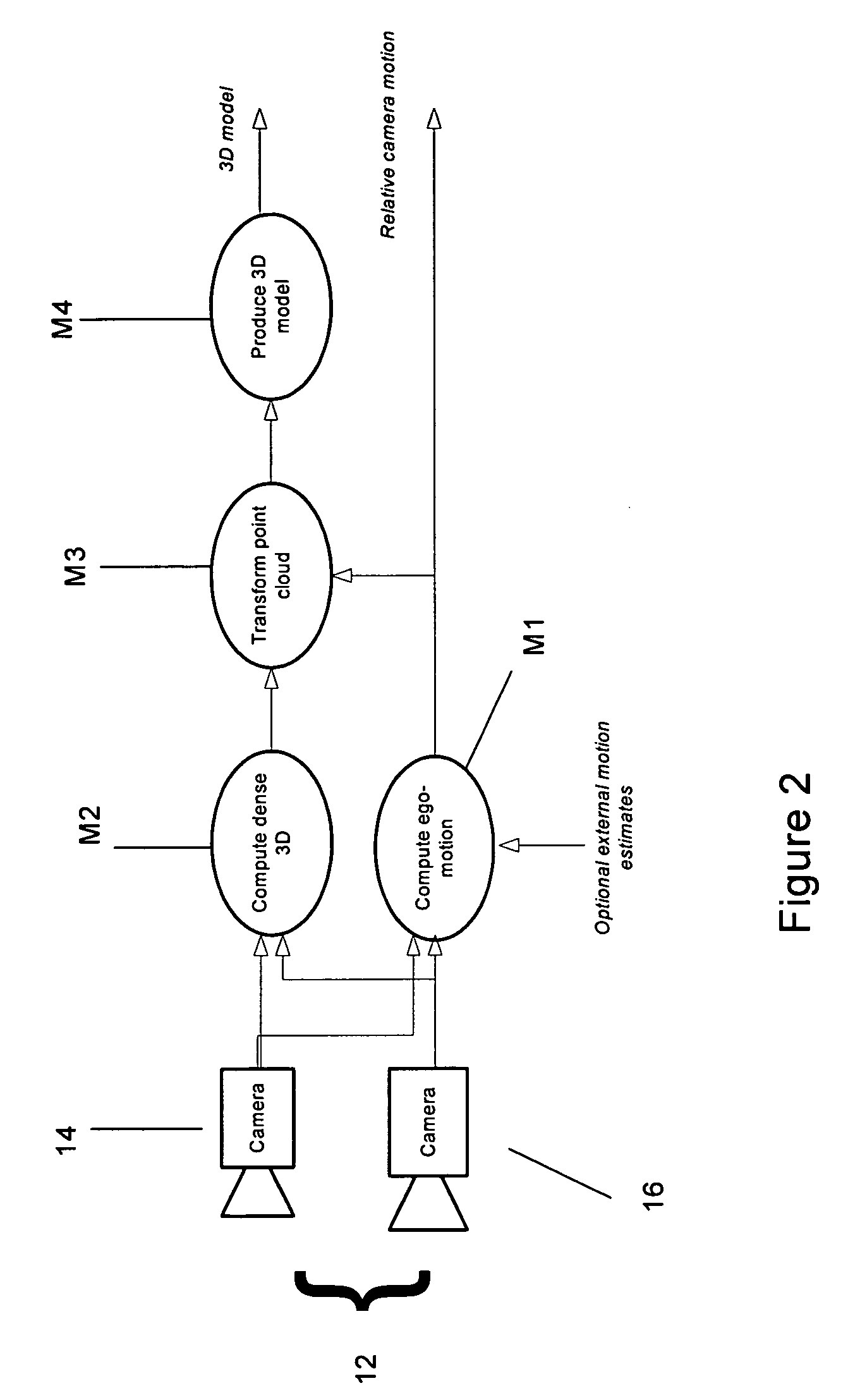3D imaging system
a 3d imaging and image processing technology, applied in the field of 3d imaging systems, can solve the problems of labour-intensive and inaccurate, not as reliable and accurate, and the automatic feature selection and matching algorithm is less accurate and reliabl
- Summary
- Abstract
- Description
- Claims
- Application Information
AI Technical Summary
Benefits of technology
Problems solved by technology
Method used
Image
Examples
Embodiment Construction
[0059] As used herein, the phrase “monocular camera” means an image recording device that projects an image of the observed scene through an optional lens onto a photosensitive element (e.g., CCD, CMOS) and equipped with means for transferring thus image to an image processing device (e.g., a computer).
[0060] As used herein, the phrase “stereo camera” means a device that comprises two or more monocular cameras described above and observing approximately the same scene from a somewhat different point of view (the cameras may be combined in one enclosure).
[0061] As used herein, the phrase “auto-referencing” means an automatic method (algorithm) to establish correspondence (reference) between two or more data sets by detecting and matching common elements in the data sets.
[0062] As used herein, the phrase “tie-points” means distinctive local features that are matched between the stereo images taken at the same time or between stereo images taken at different time. Tie-points typical...
PUM
 Login to View More
Login to View More Abstract
Description
Claims
Application Information
 Login to View More
Login to View More - R&D
- Intellectual Property
- Life Sciences
- Materials
- Tech Scout
- Unparalleled Data Quality
- Higher Quality Content
- 60% Fewer Hallucinations
Browse by: Latest US Patents, China's latest patents, Technical Efficacy Thesaurus, Application Domain, Technology Topic, Popular Technical Reports.
© 2025 PatSnap. All rights reserved.Legal|Privacy policy|Modern Slavery Act Transparency Statement|Sitemap|About US| Contact US: help@patsnap.com



